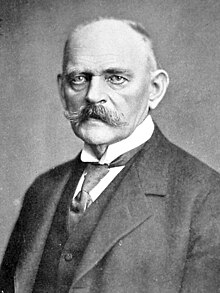Niels Neergaard
Niels Neergaard | |
|---|---|
 | |
| 8th Prime Minister of Denmark | |
| In office 5 May 1920 – 23 April 1924 | |
| Monarch | Christian X |
| Preceded by | Michael Pedersen Friis |
| Succeeded by | Thorvald Stauning |
| Council President of Denmark | |
| In office 12 October 1908 – 16 August 1909 | |
| Monarch | Frederick VIII |
| Preceded by | Jens Christian Christensen |
| Succeeded by | Ludvig Holstein-Ledreborg |
| Personal details | |
| Born | 27 June 1854 Ugilt, Hjørring |
| Died | 2 September 1936 (aged 82) Copenhagen |
| Political party | Moderate Venstre, Venstre |
Niels Thomasius Neergaard (27 June 1854 – 2 September 1936) was a Danish historian and political figure, a member of the Liberal Moderate Venstre and since 1910 of Venstre. He served as Council President of Denmark between 1908 and 1909 as head of the Cabinet of Neergaard I and as both Prime minister of Denmark and Finance Minister from 5 May 1920 to 23 April 1924, leading the Cabinet of Neergaard II and III. His last cabinet office was as Finance Minister (14 December 1926 – 30 April 1929).
Biography
He was born on 27 June 1854.
Neergaard's greatest challenges as a politician were as prime minister and finance minister after the Easter Crisis of 1920, organizing the return of South Jutland to Danish rule and having to deal with the economic crisis brought on by World War I.[1] He also had a significant influence on the content of the Constitution of 1915.[1]
Neergaard's largest work as a historian, Under junigrundloven (1892-1916), is still considered the primary work on Danish politics 1848-66.[1] In addition to his political activities and work as a historian he also dealt with journalism, and in 1884 he founded a cultural and literary magazine, Tilskueren.[2]
He died on 2 September 1936.
References
- ^ a b c Skou, Kaare R. (2005). Dansk politik A-Å Template:Da icon. Aschehoug, pp. 491-92. ISBN 87-11-11652-8.
- ^ Peter Brooker; Sascha Bru; Andrew Thacker; Christian Weikop (19 May 2013). The Oxford Critical and Cultural History of Modernist Magazines: Europe 1880 - 1940. Oxford University Press. p. 622. ISBN 978-0-19-965958-6. Retrieved 9 May 2015.

